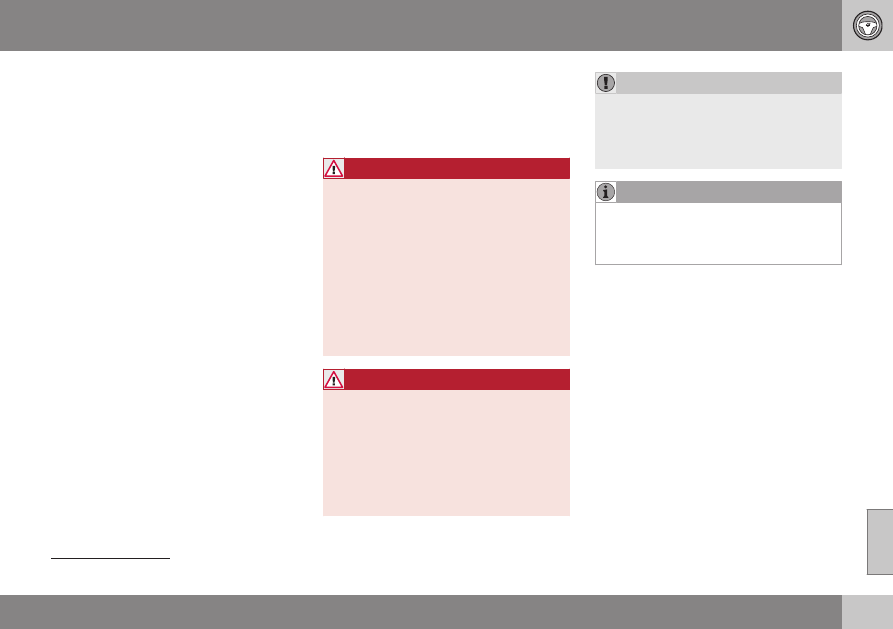Volvo V70 (2016 year). Instruction - part 18

08 Starting and driving
08
303
Filling with a fuel can
16
When filling with a fuel can, use the funnel
located under the floor hatch in the cargo
area.
Make sure you insert the funnel's pipe firmly
into the filler pipe. The filler pipe has an open-
able cover and the funnel's pipe must be slid
past the cover before filling can begin.
Related information
•
Fuel filler flap - manual opening (p. 302)
•
Fuel - handling
Fuel of a lower quality than that recom-
mended by Volvo must not be used as engine
power and fuel consumption is negatively
affected.
WARNING
Always avoid inhaling fuel vapour and get-
ting fuel splashes in the eyes.
In the event of fuel in the eyes, remove any
contact lenses and rinse the eyes in plenty
of water for at least 15 minutes and seek
medical attention.
Never swallow fuel. Fuels such as petrol,
bioethanol and mixtures of them and die-
sel are highly toxic and could cause per-
manent injury or be fatal if swallowed.
Seek medical attention immediately if fuel
has been swallowed.
WARNING
Fuel which spills onto the ground can be
ignited.
Switch off the fuel-driven heater before
starting to refuel.
Never carry an activated mobile phone
when refuelling. The ring signal could
cause spark build-up and ignite petrol
fumes, leading to fire and injury.
Mixtures of various fuel types or use of
fuels which are not recommended will
invalidate Volvo's guarantees and any sup-
plementary service agreements; this is
applicable to all engines.
Extreme weather conditions, driving with a
trailer or driving at high altitudes in combi-
nation with fuel grade are factors that
could affect the car's performance.
Related information
•
•
•
Diesel particle filter (DPF) (p. 306)
•
Fuel consumption and CO2 emissions
•
16
Only applies to cars with diesel engine.